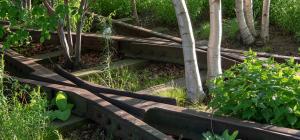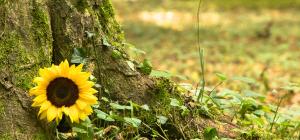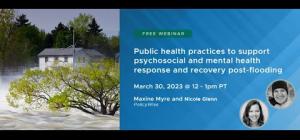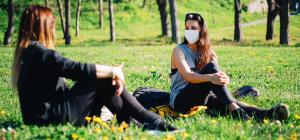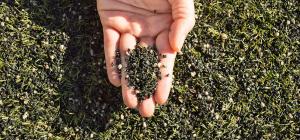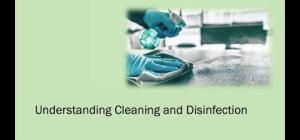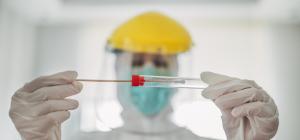
Artificial turf and crumb rubber

Modern artificial turf is used indoors and outdoors in a wide variety of settings, including multipurpose recreational and professional sports fields, playgrounds, residential areas, and public streetscapes (base of trees, sidewalks), and public parks. This product is thought to play an important role in urban environments by increasing play space, reducing injuries, allowing play under adverse weather, and at the same time decreasing water use compared to natural turf. However, concerns have been raised regarding cancer and other health risks from exposure to the chemical constituents of artificial turf blades and crumb rubber infill, which include heavy metals, volatile organic compounds (VOCs), and polycyclic aromatic hydrocarbons (PAHs).
While there may be public concern over artificial turf, the evidence to support decision-making on the use of these materials has critical gaps. The following resources have been assembled to help explain the types of evidence available, its strengths and limitations, and the data gaps yet to be filled. Links to several previous comprehensive reviews of artificial turf and its health effects are included here, as well important upcoming research that aims to fill critical data gaps.
NCCEH resources
-
Artificial turf: Contributions and limits of toxicology in decision making (Eykelbosh 2019)
This article, and the accompanying presentation delivered at the 2019 Public Health Association of BC Conference, briefly reviews recent human health risk assessments on artificial turf and discusses the expected contributions of several major upcoming projects. The paper also discusses risk communication and management approaches, as well as the need to expand the knowledge base around artificial turf and move toward a more community-based decision-making process. -
Artificial turf: Contributions and limits of health research in decision making (Eykelbosh 2019)
This presentation, delivered at the 2019 Public Health Association of BC Conference, briefly reviews the contributions of human health risk assessments to decision-making on artificial turf, and discusses risk communication and management approaches to address health concerns. -
This annotated bibliography provides a quick reference to the most recent human health risk assessments that have estimated cancer risks and non-cancer hazards for crumb rubber.
- Assessing the evidence for decision-making on artificial turf: a new hierarchy of evidence (2016)
This guidance document provides a brief overview of the different types of evidence that have been used to assess the safety of artificial turf. This document is not intended to provide a detailed review of the results, but rather to discuss the strengths and limitations of certain approaches and how these different studies contribute to the overall knowledge base.
Selected external resources
-
Comprehensive multipathway risk assessment of chemicals associated with recycled ("crumb") rubber in synthetic turf fields (Peterson et al. 2018)This article describes a human health risk assessment for crumb rubber in children, youth, and adults exposed through oral, dermal, and inhalation pathways. The authors conduct a parallel analysis for natural turfs to demonstrate the potential toxicological consequences of urban pollution on natural turfs as an alternative to artificial turfs.
-
An evaluation of the possible health risks of recycled rubber granules used as infill in synthetic turf sports fields (European Chemicals Agency, 2018)This report describes the methods and assumptions used by ECHA to assess the cancer risks and non-cancer hazards of recycled crumb rubber to child, youth, and adult players, as well as maintenance workers.
-
Incidence of malignant lymphoma in adolescents and young adults in the 58 counties of California with varying synthetic turf field density (Bleyer and Keegan, 2018)This article describes an epidemiological study analyzing the relationship between the increasing numbers of artificial turfs in California and the incidence of lymphoma, one of the cancers of concern in children playing on artificial turf fields.
-
Evaluation of health risks of playing sports on synthetic turf pitches with rubber granulate: Scientific background document (Rijksinstituut voor Volksgezondheid en Milieu, 2017)This report describes the methods and assumptions used by RIVM to assess the cancer risks and non-cancer hazards of recycled crumb rubber to child, youth, and adult players, with a special focus on child and lifelong goalkeepers.
- Investigation of Reported Cancer among Soccer Players in Washington State (Washington State Department of Health, 2017)
This report represents the first and currently only epidemiological study into the association between artificial turf and cancer. The authors analyzed the number of cancers expected among young soccer players, based on cancer statistics for Washington and US Residents as a whole, and compared these to the number of cancers observed. The study found a lower than expected number of cancers among young soccer players, including among those previously believed to be at highest risk (i.e., goalies).
- Health Impact Assessment of the Use of Artificial Turf in Toronto (Toronto Public Health, 2015)
This human health impact assessment considers risks and benefits of artificial turf in an urban environment, including the creation of urban heat islands, effects on water usage, storm water management, and aquatic toxicology, greenhouse gas emissions, positive and negative impacts on the built environment, availability of greenspace, and equitable access to recreational space.
- Environmental and health impacts of artificial turf: a review (Cheng et al., 2014)
This peer-reviewed article provides an excellent overview of the benefits and disadvantages of artificial turf, as well as a detailed description of the physical and chemical characteristics of the assembled product and its components, human exposure pathways, and the impact of environmental factors on degradation.
- Chemicals in outdoor artificial turf: A health risk for users? (Beausoleil et al., 2009)
This document from the Direction de santé publique de l’Agence de la santé et des services sociaux de Montréal presents a short review of past toxicological risk assessments for artificial turf.
Upcoming research
In recognition of the fundamental data gaps in our understanding of the health effects of exposure to artificial turf (see above), two large studies have been initiated in the US.
- Federal Research Action Plan on Recycled Tire Crumb Used on Playing Fields and Playgrounds
This initiative, carried out by the US Environmental Protection Agency (EPA), the Centers for Disease Control and Prevention (CDC), the Agency for Toxic Substances and Disease Registry (ATSDR), and the U.S. Consumer Product Safety Commission (CPSC), has four objectives:- Produce an up-to-date systematic review of the literature on artificial turf, its chemical constituents, human exposure, and human health effects;
- Characterize the chemical composition of tire crumb from a variety of sources, with and without weathering. Tire crumb samples will also be subjected to simulated biological fluid assays to determine whether chemical components are likely to enter the human body;
- Characterize the ways in which people (athletes and children) interact with playing fields and playgrounds to understand exposure routes and exposure scenarios;
- Biomonitoring to be conducted in a small group of participants.
Click the link above to check for progress on this initiative.
- Environmental Health Study of Synthetic Turf
This initiative, carried out by the California Department of Resources Recovery and Recycling (CalRecycle) and funded by the California Office of Environmental Health Hazard Assessment (OEHHA), aims to:- Determine chemical constituents of crumb rubber;
- Determine what is released to the air under various conditions (with aging and weather conditions);
- Assess what humans are exposed to via ingestion and dermal contact based on specific activities and duration of those activities;
- Analyze exposure data according to exposure level, age group, and vulnerable groups (children);
- Develop a protocol for further biomonitoring, if required for future studies.
This work is in addition to two previous studies carried out in 2007 and 2010.
This list is not intended to be exhaustive. Omission of a resource does not preclude it from having value.

